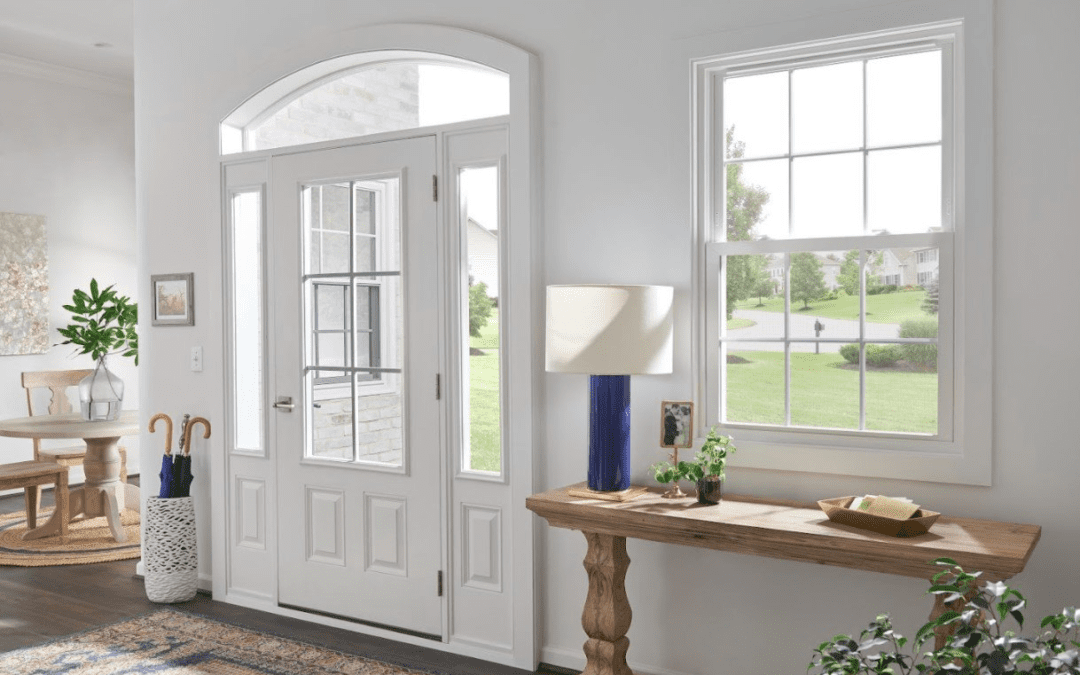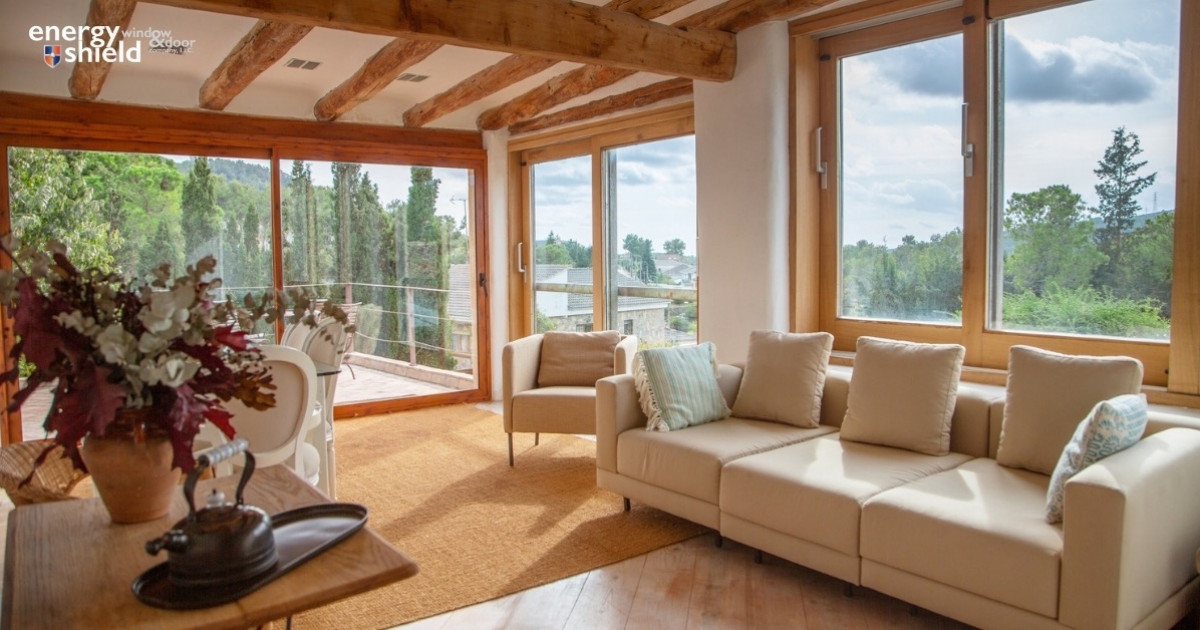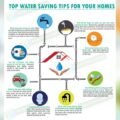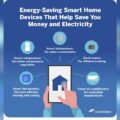Title: What are Best Energy-Efficient Windows And Doors? The best energy-efficient windows and doors typically feature multiple panes, low-E coatings, and quality framing materials. Vinyl, fiberglass, and wood are top choices for frames that offer superior insulation.
Also Read
Selecting the right windows and doors is crucial for maintaining an energy-efficient home. These components play a significant role in reducing heat transfer, which can lead to substantial savings on heating and cooling bills.
Energy-efficient windows and doors not only help lower utility costs but also contribute to a more comfortable and sustainable living environment.
Today, homeowners have a variety of options that combine advanced technologies and materials designed to optimize thermal performance. With increasing energy costs and environmental concerns, investing in energy-efficient windows and doors is a smart decision for any home improvement project.
Choosing products with the ENERGY STAR label ensures that you’re getting a product that meets strict energy efficiency guidelines set by the U. S. Environmental Protection Agency.
Credit: www.energy.gov
Introduction To Energy-efficient Windows And Doors
Energy-efficient windows and doors are key to modern home design. They reduce energy use. This saves money. It also boosts your home’s comfort. Today, they are a smart investment for any homeowner. They come in various styles and materials. Each offers unique benefits.
The Importance of Energy Efficiency
Energy efficiency means using less energy for the same job. This is crucial in homes. Efficient windows and doors keep heat in during winter. They keep it out in summer. This lessens the need for heating and cooling. It leads to a more comfortable home all year round.
Impact on The Environment And Utility Bills
Choosing energy-efficient options has a positive impact. It helps the environment. It cuts down on greenhouse gases. This is because we burn fewer fossil fuels. It also reduces utility bills. Efficient windows and doors pay for themselves over time. They are a smart choice for anyone. They are a win-win for your wallet and the planet.
Key Features of Energy-efficient Windows
Choosing the right windows can save energy and money. Let’s explore the key features of energy-efficient windows that make them the best choice.
Multiple Panes And Gas Fills
Multiple panes mean more layers of glass. More layers improve insulation. Between these panes, there’s often a gas fill. Argon or krypton gas is common. These gases are better than air at stopping heat from passing through.
- Double-pane windows have two layers of glass.
- Triple-pane windows have three. They offer even more insulation.
Low-emissivity Coatings
Low-Emissivity (Low-E) coatings are thin layers applied to glass. They reflect heat. In winter, they keep heat inside. In summer, they reflect the sun’s heat outside. This keeps homes more comfortable.
Low-E coatings also protect against UV light. This means less fading for carpets and furniture.
Quality Frame Materials
The material of a window frame affects its energy efficiency. Some materials insulate better than others.
| Material | Benefits |
|---|---|
| Vinyl | Good insulation, low maintenance. |
| Wood | Great insulation, classic look. |
| Fiberglass | Strong, durable, good insulation. |
| Aluminum | Lightweight, less insulation. |
Choosing the right frame material can greatly enhance a window’s performance.
Understanding Door Insulation And Efficiency
Doors play a vital role in home energy efficiency. Good insulation keeps homes warm in winter and cool in summer. Let’s explore how.
Core Materials And Their Properties
Door cores determine their insulation abilities. Different materials offer various levels of efficiency. Here are some common core materials:
- Foam Insulation: Traps air and reduces energy transfer.
- Wood: Natural insulator but can warp with temperature changes.
- Fiberglass: Offers great thermal resistance and durability.
- Steel with Polyurethane: Steel for strength, polyurethane for insulation.
Weatherstripping And Proper Sealing
Weatherstripping is essential for airtight seals. It prevents drafts and energy loss. Here’s how to ensure proper sealing:
| Location | Type of Weatherstripping | Benefits |
|---|---|---|
| Door Edges | Foam Tape | Easy to apply, affordable |
| Bottom Sweep | Door Sweep | Blocks air, keeps out insects |
| Door Frame | Reinforced Foam | Durable, fills gaps |
Regularly check seals for wear and tear. Replace weatherstripping as needed. A well-sealed door saves energy and money.
Energy Performance Ratings Explained
Choosing the right windows and doors is crucial for energy savings. Energy performance ratings help you understand how well a product will work. These ratings come from testing and standards. They show heat loss, heat gain, and insulation.
U-factor And R-value
U-Factor measures how well a window or door keeps heat inside. A lower U-Factor means better insulation. This is key for colder climates.
R-Value is different. It tells us how well a material resists heat flow. A higher R-Value means better insulation. This rating is vital for energy savings.
Solar Heat Gain Coefficient (shgc)
SHGC shows how much solar heat a window or door lets in. A lower SHGC is better in hot climates. It means the window blocks more sun heat.
Let’s look at these ratings in a table:
| Rating Type | Good for Cold Climates | Good for Hot Climates |
|---|---|---|
| U-Factor | Lower values | Lower values |
| R-Value | Higher values | Not as critical |
| SHGC | Not as critical | Lower values |
Remember these points when picking windows and doors:
- U-Factor and R-Value are about insulation.
- SHGC tells us about sun heat control.
- Choose ratings that match your climate needs.
Design Considerations For Aesthetics And Efficiency
Choosing the right energy-efficient windows and doors is crucial. They save energy, reduce bills, and make homes look great. But, design matters too. Let’s explore how to mix style with efficiency.
Balancing Style With Performance
Good design meets top performance in the best energy-efficient options. Materials like fiberglass, vinyl, and wood offer both. They keep homes warm or cool. And they look amazing. Always check the energy performance ratings. These ratings tell how well they block the cold or heat.
Color, Texture, And Grid Options
Windows and doors come in many colors and textures. This means you can find the perfect match for your home. Colors can impact how much heat is absorbed or reflected. Light colors reflect heat. Dark colors absorb it. Choose wisely based on your climate.
- Textures add character. They can mimic wood or have a smooth finish.
- Grids offer a classic look. They divide the glass into smaller panes.
Remember, the right design boosts your home’s look and its energy efficiency. Pick windows and doors that match your style and save energy.
Best Practices For Installation
Installing energy-efficient windows and doors is crucial. It saves energy and cuts costs. Choosing the right installation method is key. Let’s explore best practices for this process.
Professional Vs. Diy Installation
Professional installation ensures expertise and warranty. Experts know how to handle different materials. They ensure a perfect fit. DIY installation might save money. But it requires skill and the right tools. Mistakes can lead to higher costs.
Pros and Cons:
| Professional Installation | DIY Installation |
|---|---|
| Expertise and precision | Initial cost savings |
| Long-term reliability | Requires skill and tools |
| Warranty protection | Potential for errors |
Ensuring Air Tightness And Proper Alignment
Air tightness is vital. It prevents drafts and energy loss. Proper alignment ensures smooth operation. It prevents damage over time.
- Use quality sealants for gaps.
- Check alignment with a level.
- Adjust frames for a snug fit.
Correct installation affects performance. It prolongs the life of windows and doors.
Maintenance Tips For Longevity And Performance
Energy-efficient windows and doors are key to reducing bills and conserving energy. Proper maintenance is vital. It ensures long-lasting performance. Let’s explore some essential tips.
Routine Cleaning And Inspections
Regular cleaning prevents dirt buildup. Inspections spot potential issues early. Follow these steps:
- Wipe surfaces with a soft cloth.
- Use mild soap and water for cleaning.
- Avoid harsh chemicals that damage finishes.
- Check for cracks or gaps in seals and weather-stripping.
- Lubricate moving parts yearly with silicone-based products.
Dealing With Condensation And Leaks
Condensation and leaks affect efficiency. Tackle them promptly:
- Identify the source of condensation or leaks.
- Ensure proper ventilation to reduce moisture.
- Replace worn seals and weather-stripping if necessary.
- Contact a professional for unresolved issues.

Credit: paradigmwindows.com
Cost-benefit Analysis Of Energy-efficient Options
Exploring the best energy-efficient windows and doors means diving into a cost-benefit analysis. This analysis helps homeowners understand the financial aspects of their choices. It compares upfront costs with long-term savings and incentives.
Initial Investment Vs. Long-term Savings
Energy-efficient windows and doors often come with a higher price tag. This can deter some homeowners. Yet, it’s important to assess the long-term financial benefits. These products can drastically reduce energy bills. This means the initial investment pays off over time.
| Feature | Cost | Savings over 10 years |
|---|---|---|
| Triple-glazed windows | $400 per window | Up to 30% on heating and cooling |
| Insulated steel door | $1,200 per door | Up to 20% on energy bills |
Incentives And Rebates For Going Green
Many governments and organizations offer incentives for energy-efficient upgrades. This can further offset the initial costs. Homeowners can take advantage of tax credits, rebates, and discount programs.
- Energy Star Rebates: For products meeting efficiency guidelines
- Green Energy Grants: For sustainable home improvements
- Tax Credits: For qualifying energy-efficient installations
Researching these incentives can lead to significant savings. It can make energy-efficient options more accessible.
Innovations In Energy-efficient Windows And Doors
Innovations in Energy-Efficient Windows and Doors are changing homes. New tech helps cut energy bills. It also keeps homes more comfortable.
Smart Glass Technologies
Windows have evolved. Smart glass is a game-changer. It adjusts to light. It saves energy. It offers privacy.
- Electrochromic glass darkens or clears with electricity.
- Thermochromic glass changes with temperature.
- Photochromic glass reacts to sunlight intensity.
- Suspended Particle Devices control light with a switch.
Smart windows reduce reliance on HVAC. They use less power. They need minimal upkeep.
Future Trends In Energy Efficiency
Future trends focus on sustainability. They blend design and function. They aim to lower carbon footprints.
- Triple-pane windows enhance insulation.
- Frames use recycled materials.
- Dynamic shading systems adapt to weather.
- Integrated solar panels generate power.
Energy-efficient doors are also evolving. Insulated cores are standard. Tight seals prevent leaks. Advanced materials resist weather.
Smart home integration is next. Windows and doors will connect to home systems. They will automate to save more energy.
Investing in energy-efficient windows and doors pays off. They save money. They protect the planet. They enhance living spaces.
Choosing The Right Products For Your Home
Choosing the right windows and doors for your home is key. These products play a huge role in keeping your home warm in winter and cool in summer. The best part? They help you save on energy bills. Let’s explore how to pick the best energy-efficient products for your home.
Assessing Your Home’s Needs
Every home is unique. Start by understanding your home’s specific needs. Consider these points:
- Climate: Hot, cold, or mixed? This affects your choice.
- Home’s design: Big windows or small? This changes your needs.
- Direction: Which way do your windows face? North, South, East, or West?
These factors decide what kind of windows and doors will work best for you.
Comparing Brands And Warranties
Not all brands are the same. Some offer better quality and warranties. Here’s how to compare:
| Brand | Quality | Warranty |
|---|---|---|
| Brand A | High | 10 years |
| Brand B | Medium | 5 years |
| Brand C | Low | 2 years |
Look for long warranties and good reviews. These often mean better quality.
Conclusion: Making The Sustainable Choice
Choosing the right energy-efficient windows and doors is a big step. It can transform your home’s comfort, reduce energy bills, and help the environment. Here’s why making this sustainable choice is a wise investment.
The Value Of Investing In Energy Efficiency
Energy-efficient models keep homes warmer in winter and cooler in summer. They cut down on energy use. This lowers utility bills. Your home’s carbon footprint shrinks.
- Lower energy bills save money over time.
- Improved comfort means less reliance on heating and cooling systems.
- Enhanced property value comes from modern, efficient upgrades.
Taking The Next Steps Toward An Eco-friendly Home
Ready to upgrade? Start with a home energy audit. Identify where you can save the most.
- Consult with professionals for the best options.
- Choose ENERGY STAR® certified products for peak efficiency.
- Seek out rebates and incentives to offset costs.
Every step towards energy efficiency makes a difference. Your eco-friendly home awaits.

Credit: energyshieldwindowsanddoors.com
Frequently Asked Questions
What Qualifies Windows As Energy-efficient?
Energy-efficient windows are characterized by their ability to insulate homes, reducing the transfer of heat. They often feature multiple panes, low-E coatings, and quality frame materials. Such windows help in lowering energy bills by maintaining a consistent indoor temperature.
How Do Energy Ratings Affect Window Choices?
Energy ratings, like U-factor and Solar Heat Gain Coefficient (SHGC), inform consumers about a window’s insulation and sunlight-blocking properties. Higher-rated windows typically offer better energy efficiency, leading to potential cost savings on heating and cooling bills over time.
Can Doors Also Be Energy-efficient?
Absolutely, doors can be designed for energy efficiency. Features such as energy-efficient cores, proper seals, and thermal breaks prevent air leaks and minimize heat transfer. This helps maintain a stable indoor environment, contributing to lower energy consumption.
What Is The Lifespan Of Energy-efficient Windows And Doors?
Energy-efficient windows and doors generally last between 20 to 30 years. Durability depends on the quality of materials, installation, and maintenance. Proper upkeep can extend their lifespan, ensuring they continue to provide energy savings over time.
Conclusion
Selecting the right energy-efficient windows and doors is key to enhancing your home’s comfort and reducing utility bills. By focusing on features like thermal insulation and durable materials, you can achieve significant energy savings. Remember, investing in high-quality, energy-efficient options pays off by providing long-term benefits for both your wallet and the environment.


